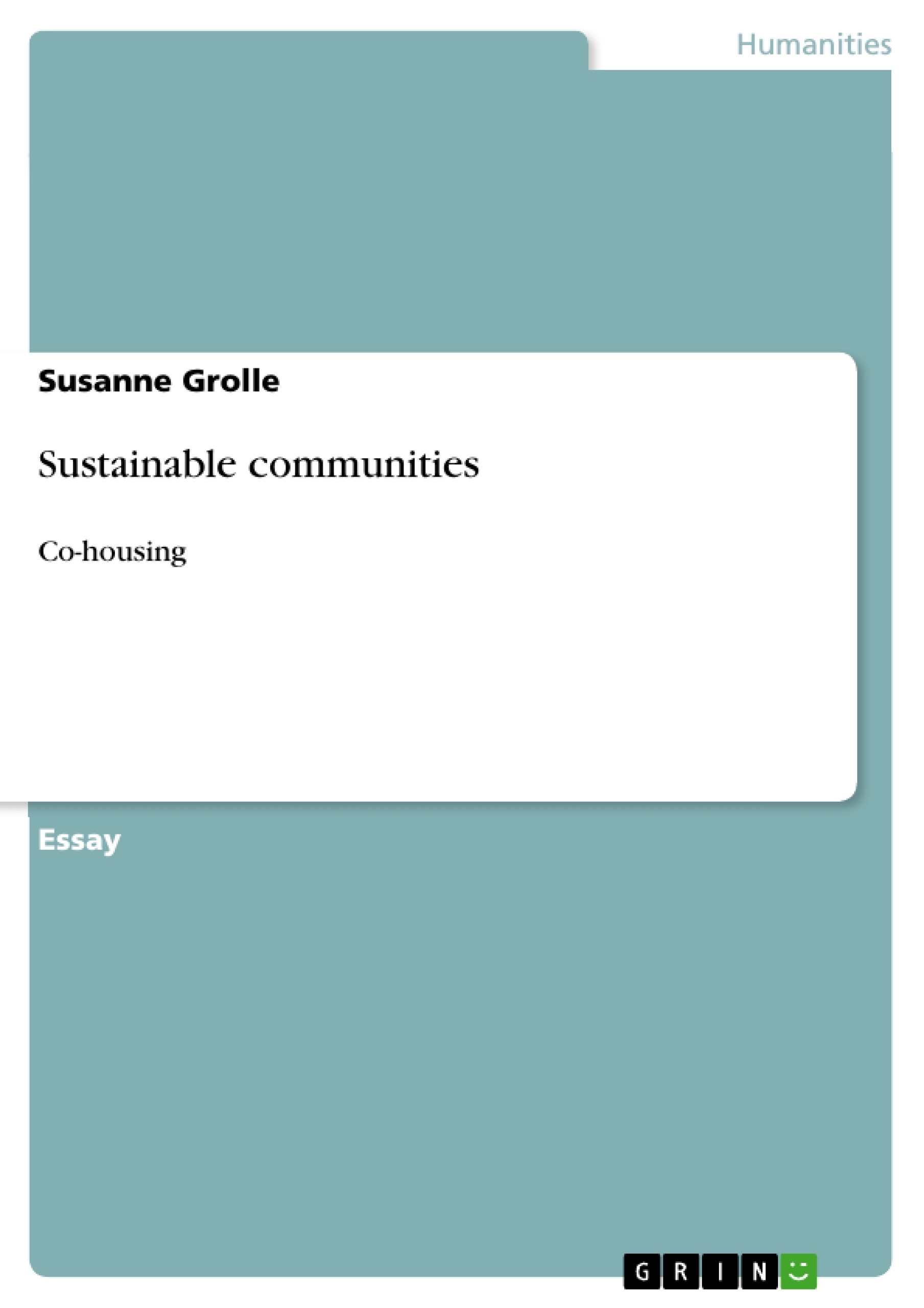In the last decade sustainability has become a central topic in discussions of regeneration in the UK and most other places in the world.
Heightening awareness of current issues and that of future generations’ is crucial in making a difference. The concept of sustainability can be applied to most aspects of human living and working. Within this essay co-housing as a form of sustainable communities will be discovered and introduced through a new built development in Gloucestershire, UK.
This document seeks to approach this topic from various angles and aims to show weaknesses and strengths of co-housing. It should be highlighted that it is not only new developments where proactive differences need to be made but also within existing developments and houses. I will show that changes and improvements can be made through small or medium interventions.
Inhaltsverzeichnis (Table of Contents)
- Introduction
- Sustainable Communities
- Definitions and ideas
- Co-housing
- Case study Springhill
- Vision and Conclusion
- References
- List of illustrations
- Appendix 1
- Appendix 2
- Appendix 3
Zielsetzung und Themenschwerpunkte (Objectives and Key Themes)
This essay explores co-housing as a form of sustainable communities, focusing on a newly built development in Gloucestershire, UK. It aims to analyze the strengths and weaknesses of this model, highlighting the importance of sustainability in both new and existing developments. The document examines the potential for positive change through small or medium interventions, emphasizing the need for proactive measures to address sustainability issues within communities.
- The definition and components of sustainable development
- The concept of sustainable regeneration and its principles
- Co-housing as a model for sustainable communities
- The strengths and weaknesses of co-housing
- The importance of small and medium interventions for achieving sustainability
Zusammenfassung der Kapitel (Chapter Summaries)
The introduction emphasizes the growing importance of sustainability in discussions of regeneration, highlighting the need for intergenerational equity. The chapter then defines sustainability according to the Brundtland Report (1987), outlining its three key components: environmental protection, economic growth, and social equity. The document also introduces the concept of sustainable regeneration, emphasizing its focus on long-term planning and beneficial interaction between economic, environmental, and social development.
Schlüsselwörter (Keywords)
Sustainable development, sustainable regeneration, co-housing, community development, environmental protection, economic growth, social equity, intergenerational equity, Gloucestershire, UK.
- Quote paper
- Susanne Grolle (Author), 2008, Sustainable communities, Munich, GRIN Verlag, https://www.grin.com/document/129111



